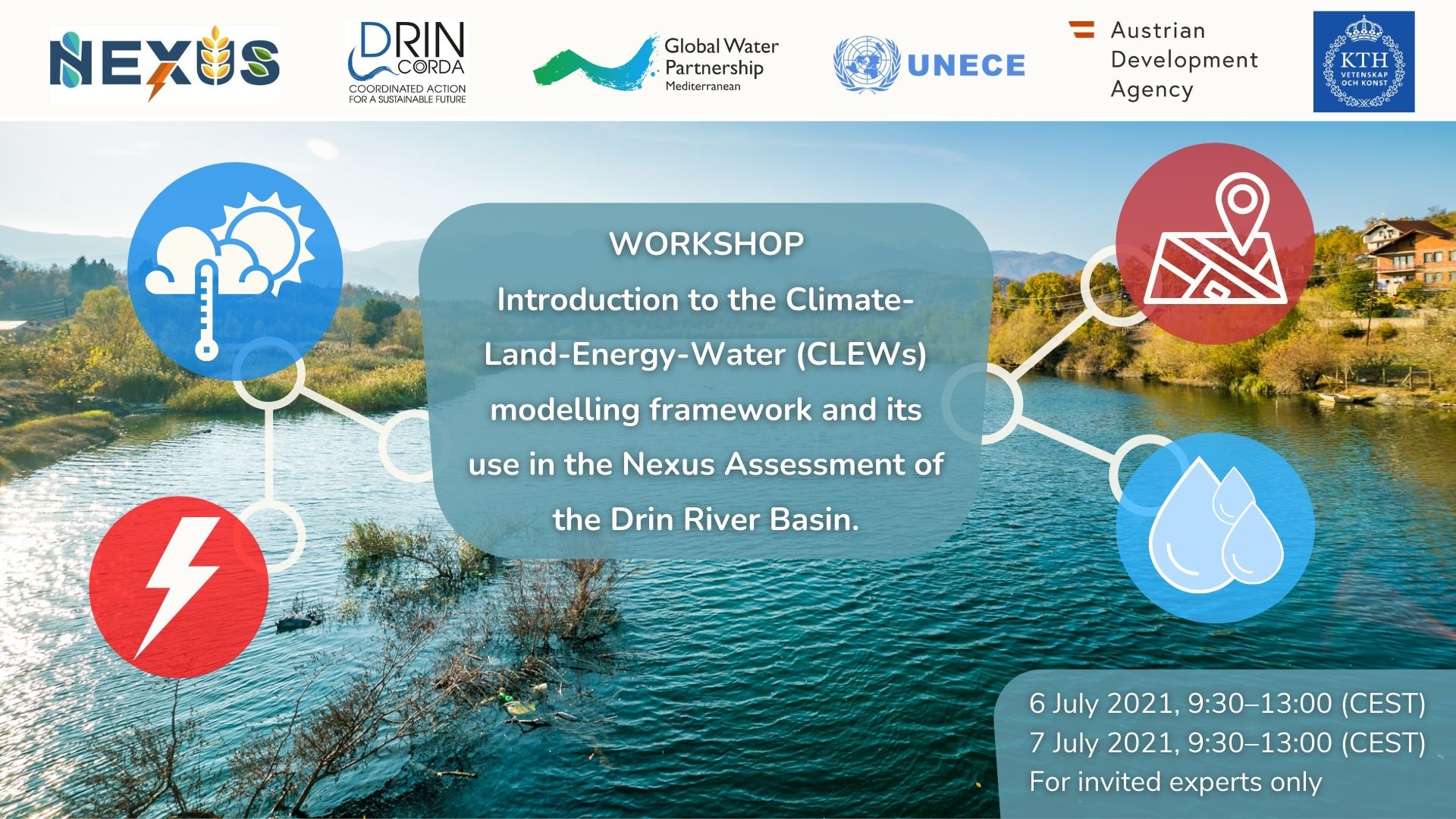It was developed in the past decade by the International Atomic Energy Agency (IAEA), the United Nations Department for Economic and Social Affairs (UNDESA), the United Nations Economic Commission for Europe (UNECE), the United Nations Development Programme (UNDP), KTH and many other partners. It has been largely been employed to support the design of national and regional cross sectoral policy packages for climate change adaptation and mitigation. Within the Nexus Assessment of the Drin River Basin[1] under the ADA-funded “SEE Nexus Project”, the component of the CLEWs framework focusing on Energy and Water was used to quantify benefits of cross-boundary cooperation in the management of the hydropower plants (HPPs) cascade on the Drin under several conditions, including changing the operational rules of HPPs to enhance flood management and control.
The current article presents the workshop’s key take outs and provides a summary of its proceedings.
The workshop
A two-day workshop was held online on 6-7 July 2021 aiming to present the CLEWs methodology and how it is used to quantitatively assess energy-water interlinkages in the Drin River Basin. The workshop was attended by 20 experts from energy institutions and utilities from the Drin Riparians. By providing an overview of general concepts, tools used and hands-on experience on model building, the workshop opened the box of the modelling analysis to the audience and laid the ground for local uptake of the model infrastructure.
Specifically, the learning objectives of the Workshop were for participants to:
- Acquire general knowledge about the assessment of the water-energy-food nexus
- Understand the scope and characteristics of the CLEWs nexus methodology
- Understand the methodology underlying the water-energy model of the Drin River Basin
- Relate the scenario results of the water-energy model of the Drin river basin to key numerical assumptions and to the CLEWs methodology
Day 1, Session I: Overview of Methodologies and models
After a short welcoming speech by Mr. Tassos Krommydas, GWP-Med Senior Program Officer, Dr. Francesco Gardumi, from KTH Royal Institute of Technology gave an overview of the CLEWs methodology and its application in the Drin Nexus Assessment.
Dr. Gardumi’s presentation:
Participants then discussed the current and potential Climate-Water-Energy nexus issues and challenges in the Drin River Basin and exchanged views on the quality of the modelling work implemented. The main challenges in the region as these were identified by the participants are:
- the establishment of cooperation in the energy sector between all stakeholders in the region, in balancing the water flows for electricity production and flood protection
- the accounting of water use for multi-purposes (including irrigation).
Mr. Youssef Almulla, from the KTH institute continued with a detailed presentation of the Water-Energy model of the Drin River Basin, underlying the open source energy model used for the representation of the region’s electricity systems (OSeMOSYS), as well as its key characteristics and assumptions.
Mr. Almulla’s presentation:
For the final part of Day 1, participants were split into breakout groups to discuss two issues:
- What are the current or potential Climate-Energy-Water-(Land) nexus challenges in the Drin River Basin?
- How do you think the CLEWs framework could be useful to you?
Day 2, Sessions I & II: Technical and Modelling Session
The second day of the Workshop was aimed at an audience with basic modelling experience. Dr. Gardumi welcomed the experts for the second day of the Workshop and gave a brief recap of the proceedings of Day 1.
Participants were guided on how to create a simple model with the CLEWs methodology, focusing on the creation of a simple electricity system model with an Open-Source energy Modelling System. After a short break, they were introduced to key concepts of CLEWs modelling and their link to the nexus challenges in the Drin River Basin and worked on the expansion of the model and the creation of scenarios with similar characteristics to those created in the Drin Nexus assessment in a guided exercise “Modifying and re-running an existing model using Jupyter Notebook.”
For an online summary of results see here.
Session III: GitHub and Model Transfer
Mr. Almulla's presentation:
Finally, they navigated through all the resources and material used in the creation of the model, so that they know where to find it and how to use it. Mr. Youssef Almulla presented the GitHub and model transfer. Specifically, Mr. Almulla referred to specific details of the Water-Energy model of the Drin River Basin and riparian countries and participants learned how it looks, how it works and how to use it and run it using Jupyter Notebook.
- Online exercise to get started with the modelling tools (Session I of Day 2): https://mybinder.org/v2/gh/KTH dESA/UNECE Capacity-building/main?filepath=cb_simple_example.ipynb
- Online exercise on scenario analysis with the modelling tool (Session II of Day 2): https://mybinder.org/v2/gh/KTH dESA/UNECE Capacity-Building/main?filepath=cb_simple_example.ipynb
- User guide for the modelling tool: https://osemosys.readthedocs.io/en/latest
- Q&A forum for the modelling tool: https://groups.google.com/g/osemosys
- Model used for the Drin Nexus assessment: https://github.com/KTH-dESA/UNECE-Capacity-Building
